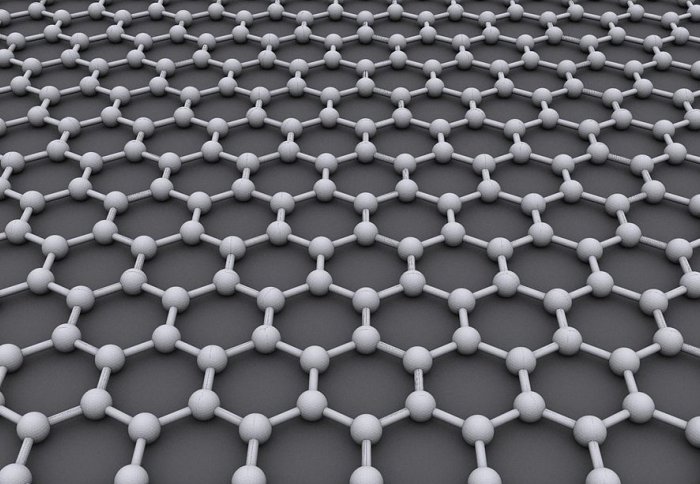

Graphene has been billed as a 'wonder material' but can it really live upto the hype? Chris Clarke, MSc Science Communication student, takes a look.
Graphene is the latest revolutionary material that has scientists and engineers salivating.
What is it? Well, take a lump of pencil lead (graphite), which is essentially stacked layers of carbon, put some tape on it, then peel it off. Take some more tape then peel it off the first piece and so on, until you have an atom thick layer of carbon that looks suspiciously like chicken wire when seen through a microscope (see rendering below). That’s how two researchers, Andre Geim and Konstantin Novoselov, first made graphene in 2004 at the University of Manchester, later winning them the Nobel Prize in Physics.
Not only is graphene exceptionally thin, but it’s heroically strong and an unrivalled conductor of both heat and electricity
– Chris Clarke
Not only is graphene exceptionally thin, but it’s heroically strong and an unrivalled conductor of both heat and electricity at room temperature. The trick is to get it to stop conducting on demand, which is vital if it is going to be used in microelectronics in our phones and laptops. If successful it could finally usurp silicon as the material of choice for the industry.
Stronger materials for aircraft? Graphene. Electric vehicle batteries that last for hundreds of miles? Graphene. Super-efficient solar cells? You get the idea… Not bad for two blokes with some tape and a lump of pencil lead.
Update (27 December 2012) - Scientists at Imperial are to receive a share of £21.5 million public funding announced by Chancellor, George Osborne MP
Article text (excluding photos or graphics) available under an Attribution-NonCommercial-ShareAlike Creative Commons license.
Photos and graphics subject to third party copyright used with permission or © Imperial College London.
Reporter
Christopher Clarke
Department of Humanities

Contact details
Email: press.office@imperial.ac.uk
Show all stories by this author



